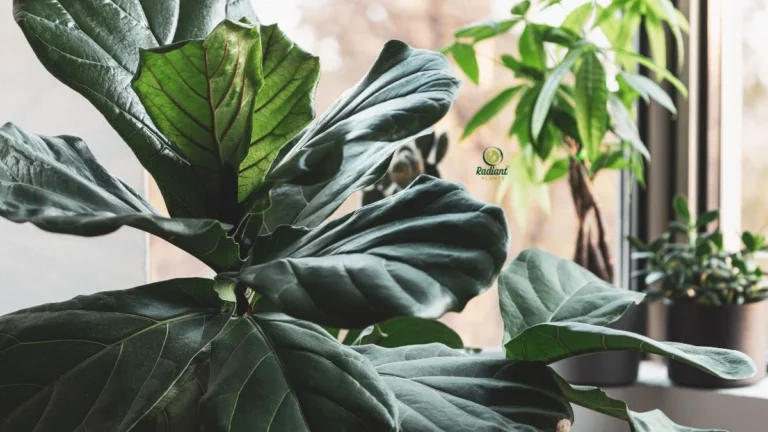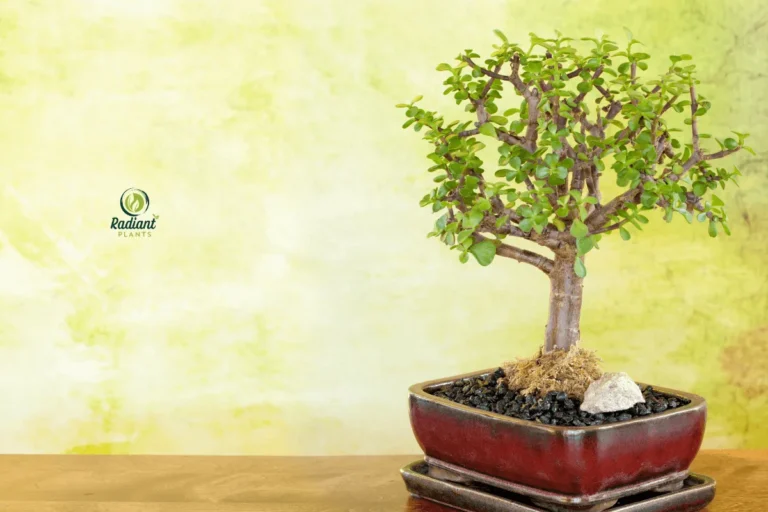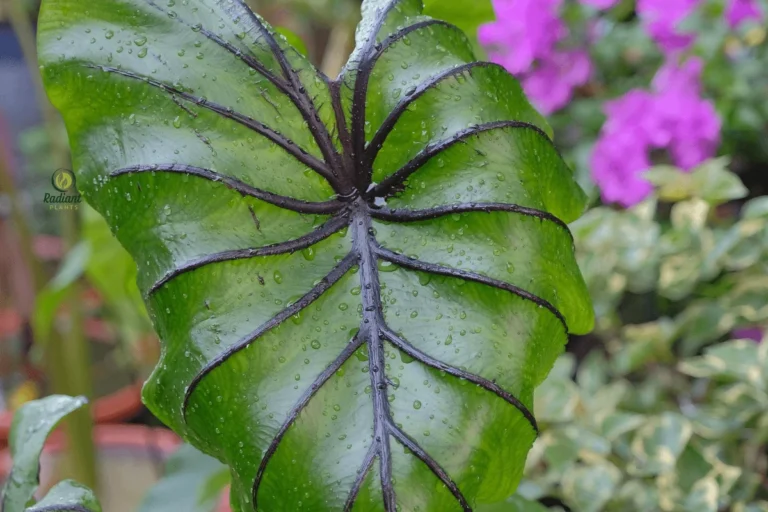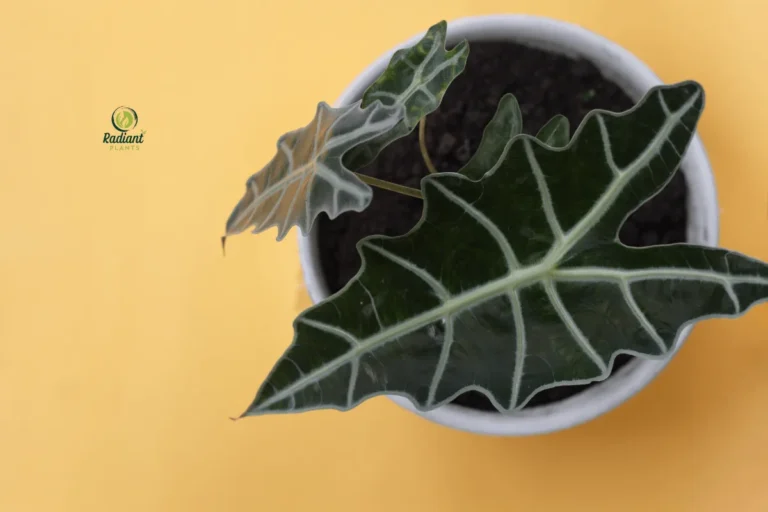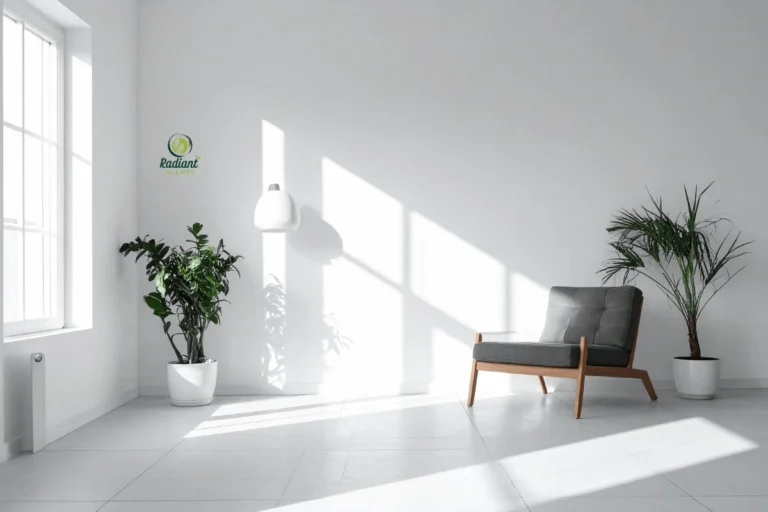Red Plants: How to Choose 5 Perfect Interior Options
Red plants are taking the interior design world by storm! These stunning houseplants bring warmth, energy, and bold color to any living space. Whether you’re a seasoned plant parent or just starting your green styling journey, adding colorful foliage to your home creates an instant wow factor that guests will remember.
Gone are the days when indoor plants were limited to basic green varieties. Today’s plant lovers are embracing vibrant red plants that serve as living art pieces in their homes. These eye-catching beauties don’t just look amazing – they also clean your air and boost your mood every single day.
In this guide, you’ll discover exactly how to choose the perfect red plants for your interior spaces. We’ll explore five amazing varieties that thrive indoors, share expert care tips, and show you how to style these gorgeous plants in your home. By the end, you’ll feel confident picking the ideal red plants that match your lifestyle and space perfectly.
Table of Contents
Table of Contents
Why Red Plants Make Perfect Indoor Companions

Color Psychology and Mood Enhancement
Red plants do something magical to our minds and emotions. The color red naturally energizes us and creates feelings of warmth and comfort. When you walk into a room with beautiful red foliage, you instantly feel more alive and happy. Scientists have found that red colors can boost our energy levels and make us feel more positive throughout the day.
These vibrant houseplants work especially well in spaces where you want to create a cozy, welcoming atmosphere. Think about your living room, dining area, or even your home office. Red plants in these spaces make everyone feel more comfortable and engaged.
Visual Impact and Focal Point Creation
Nothing catches the eye quite like a stunning red plant! These colorful beauties naturally become the star of any room. Instead of expensive artwork or decorative pieces, a well-placed red plant creates an instant focal point that draws attention and starts conversations.
Red plants work amazingly well in modern, minimalist spaces where you want to add just one pop of color. They also complement traditional decor styles by adding warmth and richness to the overall design. The best part? Your focal point keeps growing and changing, making your space feel fresh and alive.
Air Purification Benefits of Houseplants
Like all houseplants, red plants work as natural air cleaners in your home. They absorb harmful chemicals from the air and release fresh oxygen, creating a healthier environment for you and your family. Studies show that indoor plants can remove up to 87% of air toxins in just 24 hours!
Red plants are particularly great for bedrooms and living areas where you spend the most time. They help filter out pollutants from cleaning products, furniture, and everyday items, making the air you breathe cleaner and fresher.
Essential Factors When Choosing Red Plants for Your Home
Picking the right red plants for your space isn’t just about choosing the prettiest variety. You need to think about several important factors to ensure your new plant babies will thrive in your home. Let’s break down the key things to consider before making your selection.
Evaluating Your Indoor Environment
Natural Light Availability in Different Rooms
Light is the most important factor for plant success. Different red plants need different amounts of sunlight to keep their gorgeous colors bright and vibrant. Take a walk through your home and notice which rooms get the most natural light throughout the day.
South-facing windows typically get the brightest light, while north-facing windows stay dimmer. East and west windows fall somewhere in between. Don’t worry if you don’t have super bright spaces – many red plants prefer medium or low light conditions!
Here’s a simple way to test your light levels: hold your hand about 12 inches away from where you want to place your plant. If you see a sharp, dark shadow, that’s bright light. A soft shadow means medium light, and barely any shadow indicates low light.
Humidity Levels and Temperature Stability
Most red plants come from tropical areas, so they love a bit of humidity in the air. Your home’s humidity levels change throughout the year, especially during winter when heating systems dry out the air. The ideal humidity for most houseplants is between 40% and 60%.
You can easily increase humidity around your plants by placing them on pebble trays filled with water, grouping plants, or using a small humidifier nearby. Temperature-wise, most red plants are happy in normal home temperatures between 65-75°F during the day and slightly cooler at night.
Available Floor and Surface Space
Think about where you have room for plants in your home. Red plants come in all sizes, from tiny tabletop varieties to large floor plants that can reach several feet tall. Measure your available spaces before shopping so you know exactly what size plants will fit comfortably.
Remember that plants need some breathing room around them for good air circulation. Don’t cram them into tight corners or push them right up against walls. A little space around each plant helps prevent pest problems and keeps your plants healthier overall.
Matching Plants to Your Lifestyle
Time Availability for Plant Care
Be honest about how much time you can realistically spend caring for plants each week. Some red plants need daily attention, while others are perfectly happy with weekly check-ins. If you travel frequently or have a super busy schedule, choose low-maintenance varieties that can handle a bit of neglect.
Most red plants need basic care like watering, occasional fertilizing, and leaf cleaning. This usually takes just a few minutes per plant each week. However, some varieties need more frequent watering or special care during certain seasons.
Experience Level with Houseplants
If you’re new to plant parenting, start with easier red plants that forgive mistakes. These beginner-friendly varieties can handle occasional overwatering or underwatering without dying on you. As you gain confidence and experience, you can always add more challenging plants to your collection.
Even experienced plant parents should consider their current plant care routine. Adding several high-maintenance red plants at once can be overwhelming, so it’s often better to introduce new varieties gradually.
Budget Considerations for Plant Purchase and Maintenance
Red plants range in price from under $10 for small varieties to $50+ for large, mature specimens. Besides the initial purchase price, consider ongoing costs like potting soil, fertilizer, pots, and possibly grow lights if your home lacks natural light.
Cost Category | Budget Range | What’s Included |
|---|---|---|
Small Red Plants | $8-$20 | 4-6 inch pots, basic varieties |
Medium Red Plants | $20-$40 | 6-10 inch pots, popular varieties |
Large Red Plants | $40-$80+ | 10+ inch pots, mature specimens |
Care Supplies | $30-$60/year | Soil, fertilizer, pots, tools |
5 Perfect Red Plants for Interior Spaces
Now for the exciting part – let’s explore five amazing red plants that are perfect for indoor growing! Each of these varieties offers something special, from stunning foliage patterns to easy care requirements. You’re sure to find at least one that fits perfectly in your home.
Option 1: Red Aglaonema (Chinese Evergreen)

The Red Aglaonema is often called the perfect beginner plant, and for good reason! This gorgeous red plant features thick, glossy leaves with stunning patterns of red, pink, and green. The colors stay vibrant even in low light conditions, making it ideal for darker rooms in your home.
Light and Water Requirements
Red Aglaonemas thrive in low to medium light, making them perfect for offices, bedrooms, and bathrooms. They prefer to stay away from direct sunlight, which can fade their beautiful red colors. A spot near a north-facing window or several feet away from a brighter window works wonderfully.
Watering is super simple with these plants. Let the top inch of soil dry out between waterings, then give them a thorough drink. In most homes, this means watering about once a week during the growing season and less frequently in winter. Yellow leaves usually mean you’re watering too much, while brown, crispy edges indicate too little water.
Size and Growth Characteristics
Most Red Aglaonemas stay compact, growing to about 1-3 feet tall and wide. They’re slow growers, so you won’t need to repot them very often. This makes them perfect for tabletops, plant stands, or as floor plants in smaller spaces.
The leaves emerge from the center of the plant and gradually unfurl to reveal their stunning red patterns. New growth often shows the most intense colors, so you’ll always have something beautiful to look forward to as your plant develops.
Best Room Placement Tips
Red Aglaonemas work beautifully in almost any room of your home. They’re particularly stunning in bedrooms where their air-purifying qualities can improve your sleep quality. Bathrooms with windows also make great homes for these plants since they appreciate the extra humidity.
Avoid placing them directly in front of air vents or heating systems, as the constant airflow can dry out their leaves. A stable spot away from temperature extremes will keep your Red Aglaonema happy for years to come.
Option 2: Coleus (Flame Nettle)

Coleus plants are like living kaleidoscopes! These incredible red plants come in hundreds of varieties with mind-blowing color combinations. You’ll find deep burgundy leaves, bright red and green patterns, and even varieties with yellow, pink, and purple mixed in with the red tones.
Colorful Foliage Patterns and Varieties
The variety of Coleus patterns is truly amazing. Some popular red varieties include ‘Redhead’ with solid burgundy leaves, ‘Red Ruffles’ with frilly, textured foliage, and ‘Campfire’ with bright red centers and dark edges. Each variety brings its personality to your indoor space.
The colors become more intense with proper care and adequate light. Unlike many houseplants, Coleus can handle quite a bit of bright, indirect light, which helps maintain their vibrant red coloring throughout the year.
Indoor Growing Conditions
Coleus plants love bright, indirect light and consistent moisture. Place them near east or west-facing windows where they’ll get several hours of gentle sunlight each day. They can tolerate some morning direct sun, but harsh afternoon sun can scorch their delicate leaves.
These plants prefer consistently moist soil but not soggy conditions. Water when the top half-inch of soil feels dry, and make sure your pot has good drainage holes. Coleus also appreciates higher humidity, so they do wonderfully in bathrooms or kitchens with good light.
Pruning and Maintenance Needs
Regular pinching and pruning keep Coleus plants bushy and full. When you see flower spikes starting to form, pinch them off to keep the plant’s energy focused on producing beautiful foliage. This also prevents the plant from getting leggy and losing its compact shape.
You can propagate Coleus incredibly easily by taking cuttings and rooting them in water. This means you can create new plants from your favorites or share them with friends. It’s one of the most rewarding aspects of growing these colorful beauties!
Option 3: Red Anthurium

Red Anthuriums are stunning with their glossy, heart-shaped leaves and bright red flower-like bracts. These tropical beauties bring an exotic, elegant feel to any room. While they need a bit more attention than some other red plants, the spectacular results are worth the extra effort.
Distinctive Heart-Shaped Leaves and Flowers
The “flowers” on Anthuriums are colorful bracts (modified leaves) that surround the tiny flowers on the spike in the center. These bracts stay colorful for months, giving you long-lasting beauty. The deep green, heart-shaped leaves provide a perfect backdrop for the brilliant red bracts.
Red Anthuriums bloom almost continuously when they’re happy, so you’ll always have something spectacular to admire. The contrast between the glossy red bracts and rich green foliage creates a sophisticated look that works beautifully in modern and traditional homes alike.
Humidity and Temperature Preferences
Anthuriums are tropical plants that love warmth and humidity. They prefer temperatures between 70-85°F and humidity levels of 50-80%. This might sound challenging, but you can easily create the right conditions by placing your plant on a humidity tray or near other plants.
Misting is generally not recommended for Anthuriums because water on the leaves can cause fungal problems. Instead, use a humidifier, group plants together, or place the pot on a tray of wet pebbles to increase moisture in the air around your plant.
Common Care Challenges and Solutions
The most common problem with Red Anthuriums is overwatering, which can cause root rot. Use a well-draining potting mix designed for tropical plants, and let the top inch of soil dry out between waterings. Brown leaf tips usually indicate low humidity or inconsistent watering.
If your Anthurium stops blooming, it likely needs more light or fertilizer. Move it to a brighter location (but still out of direct sun) and feed it monthly during the growing season with a balanced liquid fertilizer diluted to half strength.
Ultimate ANTHURIUM (Flamingo Flower) Care Guide
Option 4: Caladium (Angel Wings)

Caladiums are breathtaking with their thin, translucent leaves that seem to glow when light shines through them. These red plants come in incredible varieties with patterns that look hand-painted by nature. They’re perfect for adding drama and elegance to your indoor garden.
Seasonal Growing Patterns
Caladiums are different from other houseplants because they grow from bulbs and have natural dormancy periods. They typically grow actively during warm months and naturally die back in winter, entering a rest phase. This isn’t a sign that you’ve killed your plant – it’s completely normal!
During the growing season, you’ll be amazed at how quickly new leaves unfurl and develop their stunning patterns. Each leaf is unique, creating an ever-changing display of natural art in your home.
Striking Leaf Color Combinations
Red Caladium varieties offer some of the most spectacular color combinations you’ll find in houseplants. ‘Red Flash’ features bright red centers with green edges and pink veining. ‘Freida Hemple’ shows solid red leaves with darker red veining. ‘Carolyn Whorton’ combines red, pink, and green in intricate patterns.
The thin leaves allow light to filter through, creating a stained-glass effect that’s magical. Place them where morning or evening light can shine through the foliage for the most dramatic display.
Dormancy Period Management
When your Caladium starts looking tired in fall or winter, it’s preparing for dormancy. Gradually reduce watering and allow the leaves to yellow and die back naturally. Once all the foliage has died, you can store the bulb in a cool, dry place until spring.
To restart your Caladium, begin watering the bulb in spring and place it in a warm, bright location. New growth should appear within a few weeks, and you’ll have a fresh, beautiful plant for another growing season.
Option 5: Red Prayer Plant (Maranta)

Red Prayer Plants are fascinating with their unique ability to fold their leaves up at night, just like hands folding in prayer. These gorgeous red plants feature stunning patterns on their leaves and are perfect for plant lovers who enjoy interactive houseplants with personality.
Unique Leaf Movement Characteristics
The most amazing thing about Prayer Plants is watching their leaves move throughout the day. In the morning, the leaves spread out horizontally to catch light. As evening approaches, they gradually fold upward into a vertical position. This daily rhythm is called nyctinasty, and it’s completely natural and healthy.
The movement is subtle but noticeable, especially if you observe your plant at different times of day. Many plant parents find this daily ritual relaxing and meditative to watch.
Low-Light Tolerance Benefits
Red Prayer Plants are perfect for darker areas of your home where other plants might struggle. They naturally grow on forest floors in the wild, so they’re adapted to low-light conditions. This makes them ideal for bedrooms, bathrooms, or offices without bright windows.
While they tolerate low light, they still need some brightness to maintain their beautiful red and green patterns. A spot near a north-facing window or under fluorescent lights works perfectly.
Propagation and Expansion Tips
Prayer Plants are incredibly easy to propagate, making them perfect for expanding your collection or sharing with friends. Look for nodes (small bumps) along the stems, then cut just below a node with a few leaves attached. These cuttings root easily in water or moist potting soil.
You can also divide larger Prayer Plants when repotting. Gently separate the roots and plant each section in its pot. This keeps your plants healthy and gives you multiple plants from one original specimen.
Care Tips for Thriving Red Plants Indoors
Taking care of red plants doesn’t have to be complicated! With a few basic techniques and some attention to your plants’ needs, you can keep them healthy and vibrant year-round. Let’s explore the essential care practices that will help your red plants thrive in your home.
Creating the Right Growing Conditions
Optimal Placement Near Windows
Window placement is crucial for maintaining the vibrant red colors in your plants. Most red plants prefer bright, indirect light, which means placing them near windows but not directly in the sun’s path. East-facing windows provide gentle morning light that most red plants love.
If you only have south or west-facing windows, place your red plants a few feet back from the glass or use sheer curtains to filter the intense light. North-facing windows work well for low-light varieties like Red Aglaonemas and Prayer Plants.
Watch your plants for signs they’re getting the right amount of light. If the red colors start fading, they might need more brightness. If leaves turn brown or crispy, they’re getting too much direct sun.
Using Grow Lights for Darker Spaces
Don’t let a lack of natural light stop you from enjoying beautiful red plants! LED grow lights are affordable and energy-efficient options for supplementing or replacing natural light. Look for full-spectrum LED lights that provide both blue and red wavelengths.
Place grow lights 12-24 inches above your plants and run them for 10-12 hours daily. This mimics natural daylight and helps maintain vibrant colors in your red plants. Many plant parents use timers to automate their grow light schedules.
Maintaining Proper Humidity Levels
Most red plants appreciate humidity levels between 40% and 60%, which can be challenging in dry homes, especially during winter. Here are several easy ways to increase humidity around your plants:
- Pebble trays: Place plants on trays filled with water and pebbles
- Plant grouping: Cluster plants together to create micro-climates
- Humidifiers: Use small humidifiers near your plant collection
- Bathroom placement: Take advantage of naturally humid rooms
Monitor humidity with an inexpensive hygrometer, and adjust your methods based on what you observe. Brown leaf tips often indicate low humidity, while soft, mushy growth might mean humidity is too high.
Seasonal Care Adjustments
Winter Care Modifications
Winter brings unique challenges for red plants. Lower light levels, dry indoor air, and cooler temperatures all affect plant health. Most red plants slow their growth during winter months, so they need less water and fertilizer.
Reduce watering frequency, but don’t let plants get completely dry. Check soil moisture more carefully since it takes longer to dry out in cooler, less bright conditions. Stop fertilizing from November through February unless you’re using grow lights to maintain summer-like conditions.
Move plants away from cold windows, heating vents, and drafty areas. The temperature fluctuations can stress plants and cause leaf drop or color fading.
Summer Growing Season Optimization
Summer is when most red plants shine! Longer days, warmer temperatures, and higher natural humidity create perfect growing conditions. This is the time to fertilize regularly, repot if needed, and take cuttings for propagation.
Water more frequently during summer, but always check soil moisture first. Plants in terracotta pots may need water daily during hot weather, while those in plastic pots might need watering every few days.
Summer is also the perfect time to give your plants a gentle shower to clean dust off their leaves. Clean leaves photosynthesize better and show off their colors more vibrantly.
Recognizing Signs of Plant Stress
Healthy red plants have vibrant colors, firm leaves, and steady growth during the growing season. Watch for these signs that your plant needs attention:
Overwatering Signs:
- Yellow, soft leaves
- Musty smell from the soil
- Dark, mushy roots
- Fungus gnats around the plant
Underwatering Signs:
- Wilted, droopy leaves
- Dry, pulling-away-from-pot soil
- Brown, crispy leaf edges
- Slow or stunted growth
Light Problems:
- Fading red colors (too little light)
- Brown, scorched leaves (too much direct sun)
- Leggy, reaching growth (insufficient light)
- Compact, stunted growth (too much light)
Problem | Symptoms | Quick Solutions |
|---|---|---|
Overwatering | Yellow leaves, musty soil | Reduce watering, improve drainage |
Underwatering | Wilted, crispy leaves | Use a pebble tray, group plants |
Low Light | Fading colors, leggy growth | Use a pebble tray, group plants |
Too Much Sun | Brown, scorched leaves | Move away from direct sun |
Low Humidity | Brown leaf tips | Use pebble tray, group plants |
Design Ideas for Displaying Red Plants
Red plants are living decorations that can transform any space! The way you display them makes a huge difference in their visual impact. Let’s explore creative ways to showcase your beautiful red plants and integrate them seamlessly into your home decor.
Single Statement Pieces vs Grouped Arrangements
A single, large red plant can serve as a stunning focal point in any room. Think of a mature Red Anthurium in a corner of your living room or a full, bushy Coleus on your dining table. These statement pieces work especially well in minimalist spaces where you want one dramatic element.
Grouped arrangements create a lush, jungle-like atmosphere that’s perfect for plant lovers who want maximum impact. Try clustering different red plants at varying heights using plant stands, hanging planters, and floor pots. Mix different textures and leaf shapes for the most interesting displays.
Consider the “rule of threes” when grouping plants – odd numbers typically look more natural and pleasing to the eye. A tall floor plant, a medium tabletop plant, and a small hanging plant create a balanced, dynamic arrangement.
Complementary Pot and Planter Selections
The right containers can make or break your red plant displays. For vibrant red plants, consider these container options:
Neutral containers like white, black, or natural terracotta let the plant colors take center stage. These timeless choices work with any decor style and won’t compete with your beautiful foliage.
Metallic planters in gold, copper, or brass add warmth and luxury to red plant displays. These work particularly well with deeper red varieties like burgundy Coleus or dark red Aglaonemas.
Textured containers in concrete, woven baskets, or ceramic with interesting patterns add visual interest without overwhelming the plants. Choose textures that complement your existing decor style.
Make sure all containers have drainage holes or use them as decorative covers for plain plastic pots with proper drainage. Root rot from poor drainage is one of the fastest ways to lose beautiful red plants.
Incorporating Red Plants into Existing Decor Themes
Red plants work amazingly well with many popular decorating styles:
Modern and Minimalist: Choose clean-lined planters and single statement plants. Red Aglaonemas in white ceramic pots create striking, simple displays.
Bohemian and Eclectic: Mix different red plant varieties in colorful, patterned pots. Hang some plants at different levels and cluster others on plant stands for a collected-over-time look.
Traditional and Classic: Display red plants in elegant ceramic or brass planters. Anthuriums work particularly well in formal settings with their sophisticated appearance.
Industrial and Urban: Use concrete planters or metal containers to showcase red plants. The contrast between soft, organic foliage and hard, industrial materials creates compelling visual tension.
Scandinavian and Natural: Combine red plants with light wood plant stands and simple, neutral planters. The pop of red color adds warmth to the typically cool color palette.
Frequently Asked Questions About Red Plants
What makes red plants maintain their vibrant colors indoors?
Red plants keep their beautiful colors through proper light exposure and consistent care. Most red plants need bright, indirect light to maintain their vibrant hues. Without adequate light, the red pigments fade, and leaves may turn greener. Providing the right balance of light, water, and nutrients helps preserve those stunning red tones you love.
Are red plants harder to care for than green houseplants?
Not necessarily! Many red plants are just as easy to care for as traditional green houseplants. Varieties like Red Aglaonema and Prayer Plants are quite beginner-friendly. The key is choosing red plants that match your experience level and available care time. Start with easier varieties if you’re new to plant parenting.
How often should I water my red plants?
Most red plants prefer to dry out slightly between waterings. Check the top inch of soil – if it’s dry, it’s usually time to water. This typically means watering once a week during the growing season and less frequently in winter. Always adjust based on your home’s temperature, humidity, and light conditions, as these factors affect how quickly soil dries out.
Can red plants survive in low-light conditions?
Yes! Several red plants prefer low to medium light conditions. Red Aglaonemas and Prayer Plants are excellent choices for dimmer areas of your home. While they may not show the most intense red colors in low light, they’ll still maintain beautiful foliage and stay healthy. Consider using grow lights if you want to maximize color intensity.
Do red plants need special fertilizer?
Red plants don’t need special fertilizer – regular houseplant fertilizer works perfectly fine. Use a balanced liquid fertilizer diluted to half strength during the growing season (spring and summer). Avoid fertilizing in winter when most plants slow their growth. Over-fertilizing can cause more harm than good, so less is usually more with houseplant feeding.
Why are my red plant’s leaves turning green?
Leaves turning from red to green usually indicate insufficient light. Red pigments in plants need adequate light to develop and maintain their intensity. Try moving your plant closer to a window or supplementing with a grow light. However, some color variation is normal, and not all leaves on red plants will be completely red.
Conclusion
Choosing the perfect red plants for your home doesn’t have to be overwhelming! By considering your space, lifestyle, and experience level, you can find beautiful varieties that will thrive in your indoor environment. Remember that each of the five red plants we’ve discussed – Red Aglaonema, Coleus, Red Anthurium, Caladium, and Prayer Plant – offers something unique for different situations and preferences.
Start with just one variety that appeals to you most and matches your current setup. There’s no need to transform your entire home into a jungle overnight! As you gain confidence and experience success with your first red plant, you can gradually add more varieties to create the vibrant, colorful indoor garden of your dreams.
The key to success with red plants is understanding their basic needs and providing consistent care. With proper light, watering, and attention to humidity, these gorgeous plants will reward you with stunning colors and healthy growth for years to come. Your home will feel more alive, welcoming, and beautiful with these natural works of art brightening your daily life.
Ready to start your red plant journey? Choose one variety from our list that matches your space and experience level. Visit your local nursery or browse online plant retailers to find your perfect red plant companion. Your future self will thank you for adding these incredible pops of color to your home!


